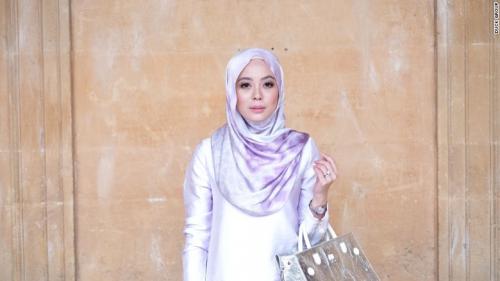How a Brunei princess and Malaysian celebrity made a hit hijab line

How a Brunei princess and Malaysian celebrity made a hit hijab line
Continuing the theme of female Muslims in modernity, this article reports on a collaboration between a Bruneian princess and a Malaysian entrepreneur that culminated in a successful, fashionable hijab line in 2015. This transnational collaboration demonstrates a regional similitude in hijab trends across Southeast Asia, with Brunei seeing a heightened consciousness for hijab fashion as well as Indonesia and Malaysia. These trends transcend political differences between the three countries: Brunei uniquely has implemented (since 2014) Sharia Law, yet it too has integrated itself into the regional economy for more fashionable hijabs. Rather than mandating clothing for females like other Muslim countries, Brunei only expects modesty, and as a result is more open to variation in female clothing. More than anything, this demonstrates the lack of consensus globally of what Sharia Law actually demands.
One interesting line in this article is the mention of the Duck Scarves being "high-end scarves aimed at urban women," which suggests that there is hefty demand for colorful, fashionable scarves from a higher-income sector of the populace, a conclusion harmonious with our previous Smith-Hefner reading and the previous "Hijabster" article I posted. The fact that they are quite expensive has attracted some controversy, however, with critics like blogger Zairina Zarin arguing that such elevated prices attach a mark of status on whoever wears the hijab (link: http://songketalliance.com/post/160069147323/what-the-duck-a-critique-of...). Such a mark of status attracts attention from people, which defeats the purpose of hijabs in the first place. One might expect an outcry coming from a man, but here it is a female blogger critiquing the trend, which perhaps reveals that women do indeed have a significant part in the discourse regarding the hijab and moderrnity.
In contrast, Princess Sarah "framed the venture as a dialogue between two women," thus implying a positive aspect to commodification as a form of cultural exchange. Being a universal but also a variable article of clothing in the Islamic world, the integration of the hijab into modern fashion and enterprise fosters a merging of perspectives across different nations. It is unclear, then, that the selling of the hijab is merely an instrumental means to profit. It is a spiritual enterprise, promoting Islamic values while at the same time allowing hijab wearers to feel comfortable and trendy.
Comments
I really like the thread coming through your articles selection here. We can compare and contrast this case with the Nike hijab project which is coming out in a few months (https://www.nike.com/us/en_us/c/women/nike-pro-hijab) to see how women are involved in different efforts to integrate the headscarf into more domain of modern societies. The point about social distinction, however, is something worth developing to tease out how the hijab functions as sartorial item, like many fashion pieces, that can encode the social standing of its bearer. Great work so far!
Pages